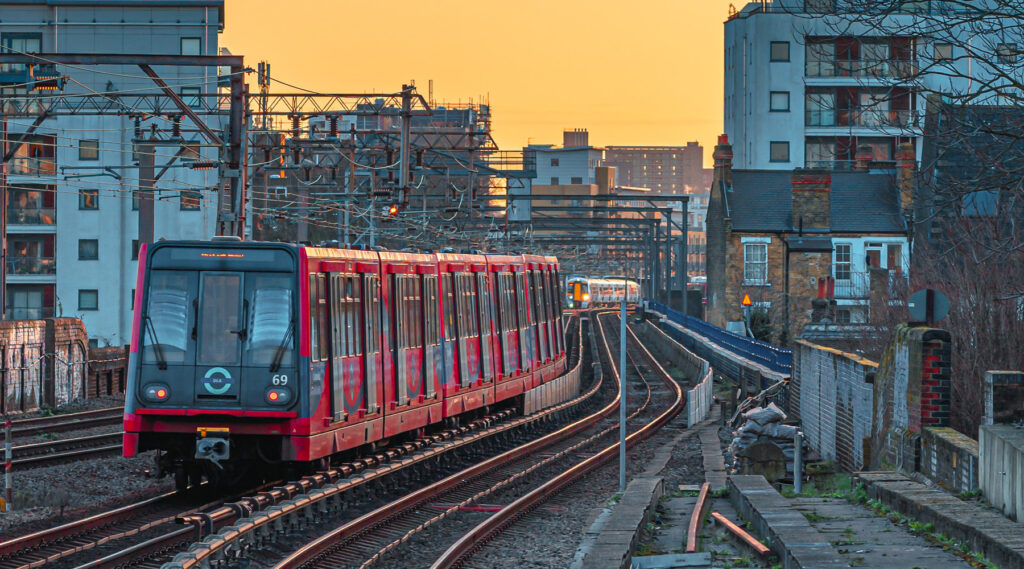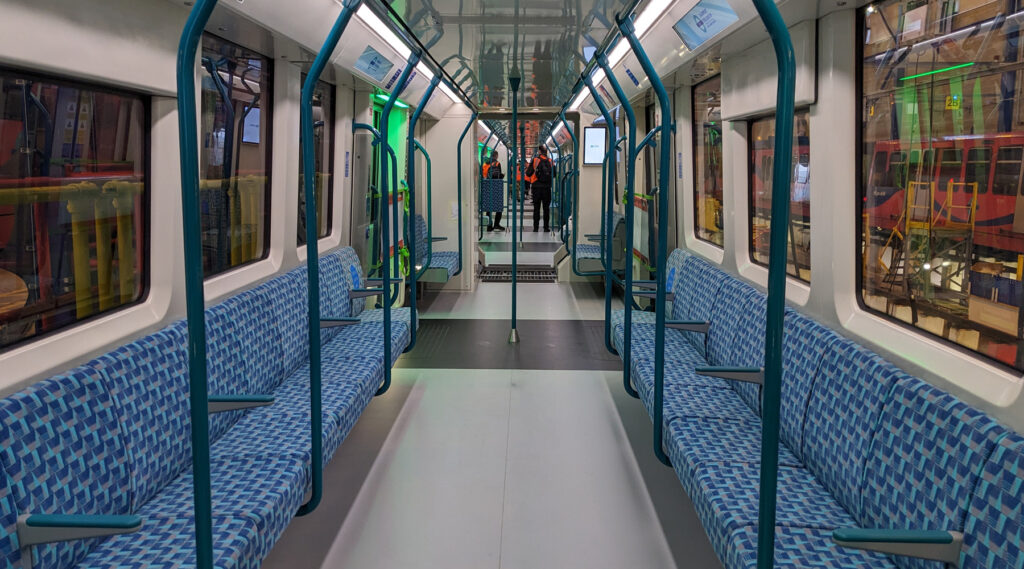Transport for London (TfL) is having to run shorter trains on the DLR while it waits for its new fleet of replacement trains to arrive.
The issue is that the 30-year old B92 trains are past their ideal retirement age, and in order to keep the trains running until their replacements arrive, TfL has had to reduce the millage each train operates.
In order to do that, on the Woolwich branch, they’ve reduced the number of cars per train from three to two cars, so that they can reduce the mileage on the unused carriages.
If they didn’t do anything, then, as an FOI request has confirmed, there was a possibility that TfL would now be starting to take some of the DLR trains out of service entirely as they would reach their mileage limits, after which they would be required to be given a heavy overhaul.
With the trains about to be scrapped anyway, a heavy overhaul is an expensive option, but also, with the replacement trains arriving for testing on the network, there’s not enough space in the depot to carry out overhauls anyway.
Had TfL decided to keep the trains running normally and take trains out of service when they hit their millage limits, then the DLR could have been losing as many as 5 trains a month from the fleet from May onwards, which would have caused considerable problems for passengers.
Many “least bad” options were considered to keep the fleet of older trains running and reduce inconvenience to passengers. In the end, the decision was to run 2-car trains so that TfL could conserve millage on the unused carriages and keep them in use for longer.
The first of the two-car trains came into service on the Woolwich to Stratford branch late last year, but only on the quieter Mondays and Fridays. However, with the arrival of the new trains into passenger service being delayed by a few months, TfL took the decision in February to introduce two-car DLR trains throughout the Mon-Fri working week as well.
Still only on the Woolwich branch, which is quieter than the Lewisham branch, thanks mainly to the Elizabeth line opening. Overall, TfL expects to cut total train millage across the fleet by roughly 300,000 vehicle km, which is enough to keep the trains running through to October if necessary.
The alternative to shortening the trains would have been to run fewer full-length trains. As long as the overall capacity is the same, running a more frequent service with shorter trains is generally better, as it reduces the waiting time at stations.
When the new trains are rolled out, they will replace the older trains in the DLR fleet, which will help improve service frequency and reliability. Eventually, when all the new trains have arrived, the DLR’s capacity will increase by about a third.
However, that’s a while away, so for the next few months at least, people on the Woolwich branch of the DLR will have to squeeze onto 2-car trains.









There has been a reduction to two carriages on the Beckton branch for quite some time. It allows them to run trains every five minutes at peak times rather then every ten.
I love the way the DLR calls a two-car unit “one car”; these six-car trains are actually reducing to four cars.
As the new trains will be single units of six cars, articulated as the current two-car units are, DLR will have call them “one car” to stick with their insane convention.
When will the New trains Start in passenger Service?
Public transport in London is becoming a joke.
Don’t be silly
In what sense?
No it isn’t.
I guarantee the same tall bloke who decided on seat heights on the DLR ordered the new trains.
No idea why the civil terdants haven’t set a standard for these things. I’m sitting so comfortably on the Metropolitan, so why can’t I on the DLR?
Those people complaining don’t remember that the original DLR trains were one car long!
By squeezing passengers into two-cars, how is that complying with TFL’s Health and Safety Covid19 regulations to make public transport safe and hygienic?
There isn’t a H&S regulation about space requirements on public transport — as anyone who travels by tube or bus will confirm.
lol because absolutly everyone complied with the covid regulations!
Which in any case are no longer extant.
TFL no longer provide hand sanitiser.
But if you want to wear a mask then fine.
WHY are the new trains delayed in delivery? Were they late i being ordered? Is thew contract to supply being met- if not, who pays?
Click on the link in the article for the news about the delay.
Thank you Ian. I think my question still stands- who’s fault; who pays? Did the contract allow for this failure to meet a reasonable expectation regarding stopping distance? Who pays for these ‘consequentials’?
If you genuinely interested – file an FOI to find out.
In reality, most people accept that perfection is unlikely on first attempt and that the whole point of testing is to find and fix bugs before passengers are affected.
Candidly, your approach seems more about finding out who is to blame and how to punish them – whereas good management and engineering is about blame free approaches to finding out what went wrong and fixing it. If you start trying to find who rather than what you encourage cover-ups, not fact finding.
Thank you Ian. Brian.